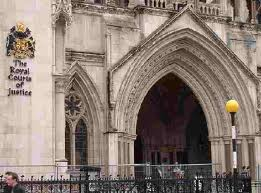The Court of Appeal has dismissed appeals by two councils against empty rates mitigation schemes based on a “managed insolvency” process, and has allowed appeals by the companies administering the schemes.
The judgment in this case, known as Rossendale Borough Council and Wigan Council v Hurstwood Properties Ltd and Property Alliance Group Ltd (2019) EWCA Civ 364, concerns two schemes designed to avoid the payment of National Non-Domestic Rates (NDR) on properties which in most instances were unoccupied. Both schemes involved the grant of leases of the properties to special purpose vehicle companies (SPVs) without assets or liabilities which, as part of the scheme in question, were then placed in voluntary liquidation or were allowed to be struck off the register of companies as dormant companies and thus dissolved. This ensured that the SPVs were exempt from empty rates liabilities.
The local authorities challenged these schemes contending, firstly, that these were cases where it was appropriate to look behind the SPV and at the company arranging the scheme and, secondly, that the leases fell to be disregarded and that rate liabilities continued to rest with the owners of the buildings concerned.
In a detailed judgment, Lord Justice Richards found that there was no justification for “piercing the corporate veil” to look behind the SPV companies and at the building owner or the company administering the mitigation scheme. The Court of Appeal noted that tax avoidance was not an appropriate ground on which to pierce the corporate veil and that the SPV’s were not used as “engines of fraud” or “to take unconscionable advantage”. For these reasons the SPV’s were liable for business rates and were entitled to enjoy the empty rates exemption granted to insolvent companies.
Lord Justice Henderson dealt with the claim by the local authorities that the Ramsay principle (referring to a case known as W.T. Ramsay Ltd v Inland Revenue Commissioners [1982]) allowed them to ignore the leases to the SPV’s and to seek to recover rates from the building owners. In his judgment he found that the legislation established clearly that the liabilities for empty rates in respect of these buildings rested with the SPV’s and that the tax avoidance motivation of the parties, and the artificial nature of the schemes, were irrelevant to determining liability.
The court dismissed the appeals by the rating authorities and allowed the appeals by the defendant companies. Building owners who have used schemes such as these to mitigate empty rates liabilities will be pleased to see that these schemes have been supported as legally sound and effective by the Court of Appeal. But it would be prudent to wait to see whether there is any attempt to appeal further to the Supreme Court before we can say for certain that this is the case.

